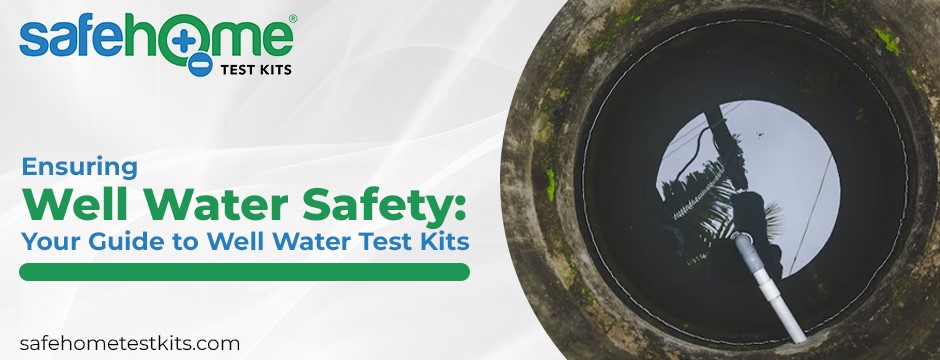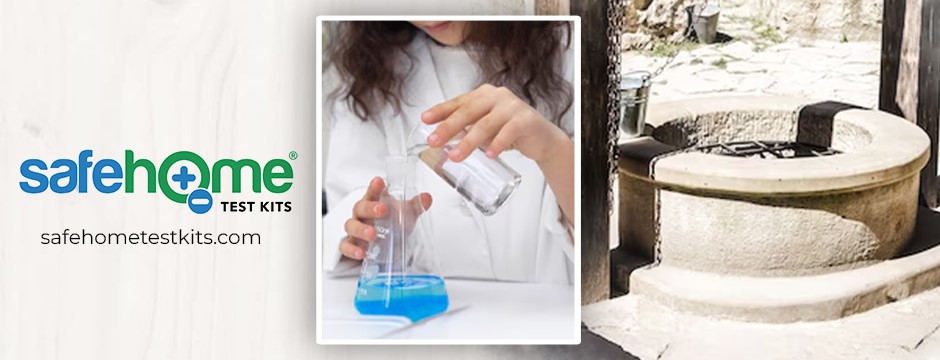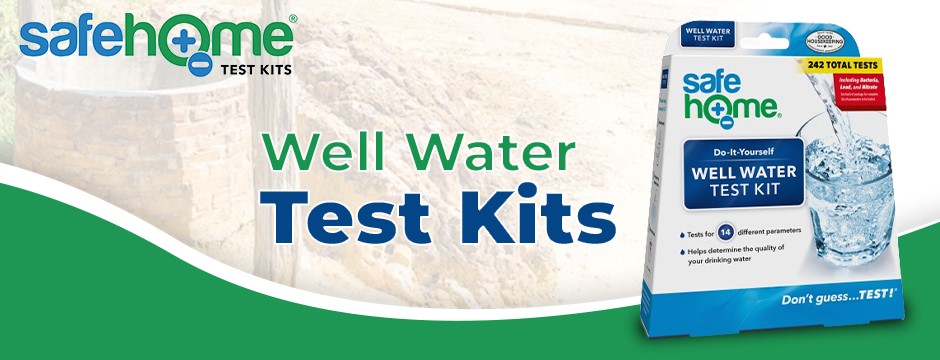Ensuring Well Water Safety: Your Guide to Well Water Test Kits

Well water, often hailed for its purity, can conceal hidden dangers that affect the health of those who consume it. Contaminants such as bacteria, nitrates, heavy metals, and pesticides can infiltrate well water sources, posing serious health risks. To safeguard the well-being of households relying on well water, regular testing is essential. In this comprehensive guide, you will be able to explore the world of well water test kits, shedding light on their significance, types, proper usage, and interpretation of results.
Understanding the Risks: Identifying Common Well Water Contaminants
Microbial Contaminants: Bacteria and Pathogens
Well water is susceptible to microbial contaminants, including bacteria such as E. coli and coliform. These contaminants can cause severe health issues, especially if ingested. Testing for microbial contamination is a crucial step in ensuring the safety of well water for consumption.
Chemical Contaminants: Nitrates, Heavy Metals, and Pesticides
Nitrates from fertilizers, heavy metals like arsenic and lead, and pesticides from agricultural runoff can infiltrate well water, posing significant health risks. Long-term exposure to these chemicals is linked to various health problems, making it imperative to include them in a comprehensive well water testing regimen.
The Role of Well Water Test Kits: An Overview
Importance of Testing: Proactive Health Protection
These types of test kits play a pivotal role in proactively protecting the health of individuals relying on well water. Unlike municipal water supplies, which are regularly monitored and treated, private wells are the responsibility of the homeowner. These test kits empower individuals to assess the safety of their water and take corrective actions if necessary.
Types of Well Water Test Kits: A Variety of Options
Well water test kits come in various types, catering to different needs and concerns. Some kits focus on specific contaminants, while others provide a more comprehensive analysis. Common types include microbial tests, chemical tests, and multi-parameter kits that cover a broad spectrum of potential contaminants.

Selecting the Right Well Water Test Kit
Understanding Your Needs: Tailoring Tests to Your Concerns
Choosing the right well water test kit involves understanding the specific concerns and risks associated with your well water source. If microbial contamination is a primary concern, a kit specifically designed for bacteria and pathogens is essential. For those in agricultural areas, comprehensive tests covering nitrates and pesticides become crucial.
Certifications and Accreditations: Ensuring Reliability
Opt for these test kits that are certified by reputable organizations. The Environmental Protection Agency (EPA) and the National Sanitation Foundation (NSF) are two common certifications to look for. These certifications ensure that the kits meet stringent standards for accuracy and reliability.
Conducting Well Water Tests: Step-by-Step Guide
Preparing for Testing: Gathering Necessary Supplies
Before initiating well water testing, gather all the necessary supplies included in the kit. These typically comprise sample containers, testing strips, reagents, and clear instructions. Ensure that the kit is not expired, as outdated reagents may yield inaccurate results.
Collecting Water Samples: Ensuring Accuracy
Follow the provided instructions for collecting water samples. This may involve letting the water run for a specified period to ensure the sample represents the water currently in the well. Use the designated containers to collect samples from various points in the well, including taps and spigots.
Executing the Tests: Following Precise Procedures
Different well water test kits may have varying procedures, so it’s crucial to follow the provided instructions meticulously. Whether using testing strips, liquid reagents, or other methods, precise execution is essential for accurate results. Take note of testing times, proper mixing techniques, and any additional steps specified by the kit.
Interpreting Well Water Test Results: Deciphering the Data
Understanding Parameters: Making Sense of the Numbers
Well water test results often present a set of numbers representing concentrations of different contaminants. Understanding these parameters is key to interpreting the data. For example, the acceptable levels for nitrates and bacteria are well-defined by health standards, allowing you to gauge the safety of your well water.
Comparing Results to Guidelines: Determining Safety
Refer to health guidelines, such as those provided by the EPA or other relevant authorities, to compare your well water test results. These guidelines outline acceptable levels of contaminants and help determine if corrective action is necessary. Remember that some contaminants may have immediate health implications, requiring swift attention.
Taking Action: Addressing Contamination Concerns
Implementing Remediation Measures: Safeguarding Water Quality
If well water test results indicate contamination exceeding acceptable levels, swift action is paramount. The necessary remediation measures depend on the specific contaminants detected. This may involve installing water treatment systems, repairing well infrastructure, or implementing agricultural best practices to prevent runoff contamination.
Regular Monitoring: Ensuring Long-Term Water Quality
Well water quality can change over time due to environmental factors, seasonal variations, or nearby activities. Establish a routine for regular well water testing to ensure ongoing safety. This proactive approach allows for the timely detection of emerging issues, enabling prompt intervention and safeguarding the well-being of those consuming the water.
The Future of Well Water Testing: Innovations and Trends
Advancements in Sensor Technology: Real-Time Monitoring
As technology evolves, the future of well water testing holds promising innovations. Sensor technologies capable of real-time monitoring are emerging, providing continuous insights into water quality. These advancements may revolutionize how individuals and communities approach well water safety, offering more immediate and actionable data.
Integration with Smart Home Systems: Seamless Monitoring
The integration of well water testing with smart home systems is on the horizon. Imagine receiving real-time alerts on your smartphone if a sudden spike in contaminants is detected. This level of integration enhances convenience and ensures a more immediate response to potential water quality issues.

Experience Water Confidence with the Safe Home® Well Water Test Kit
Concerned about the quality of your well water? Enter the future of well water testing with the Well Water Test Kit by Safe Home® – a revolutionary solution meticulously crafted by EPA-certified scientists boasting over 150 years of combined expertise. This at-home kit offers an impressive 242 tests across 14 parameters, setting a new standard for comprehensive well water quality assessment.
Our commitment to your well-being is unwavering, earning us the exclusive Good Housekeeping Seal, a symbol of trust. Recognized as one of the Top-10 New Products at the National Hardware Show, our kit reflects innovation and dedication to clean water solutions.
Manufactured in the USA, this Test Kit assures quality and contributes to global clean water initiatives. A portion of every kit sale supports these initiatives, making your purchase a meaningful contribution to improving lives worldwide.
Testing well water has never been simpler or more effective. Our trilingual instructions guide you through the process, ensuring ease and accuracy. The kit covers crucial parameters like Coliform Bacteria, Lead, Copper, Calcium, Iron, Nitrate, Nitrite, Hardness, and more, providing a comprehensive analysis of your well water quality.
For complete transparency, examine the attached package image to see the number of tests available for each parameter. Safe Home® believes in empowering you with knowledge to make informed decisions about the quality of your well water. Choose confidence, choose us for a healthier, cleaner water future.
Conclusion: Empowering Individuals for Safe Well Water
In the pursuit of safe well water, well water test kits emerge as indispensable tools, empowering individuals to take charge of their water quality. Understanding the risks, selecting the right kit, and conducting tests with precision are crucial steps in this journey. Interpreting results and taking swift action if needed ensures the ongoing safety of well water sources. As we embrace innovations in testing technologies, the future promises even more seamless and immediate ways to monitor well water quality. By staying informed and proactive, individuals can safeguard their health and that of their communities, ensuring that well water remains a reliable and safe source for years to come.


